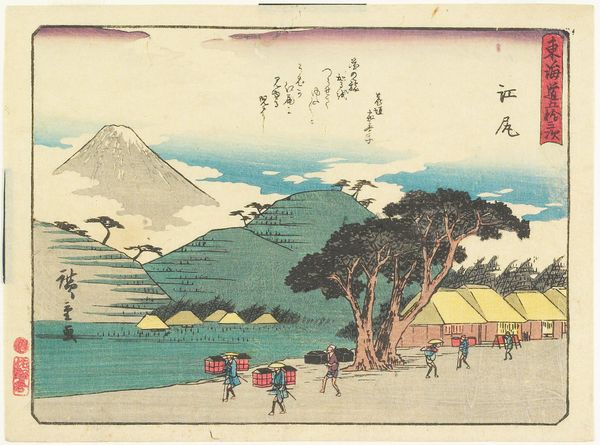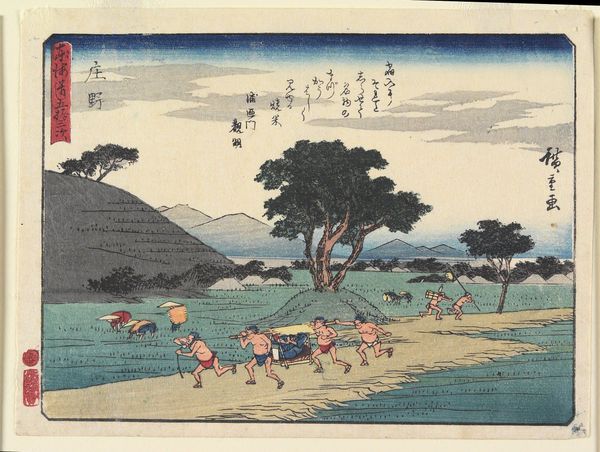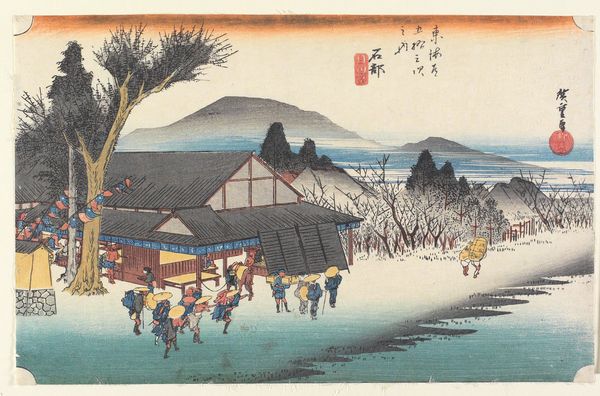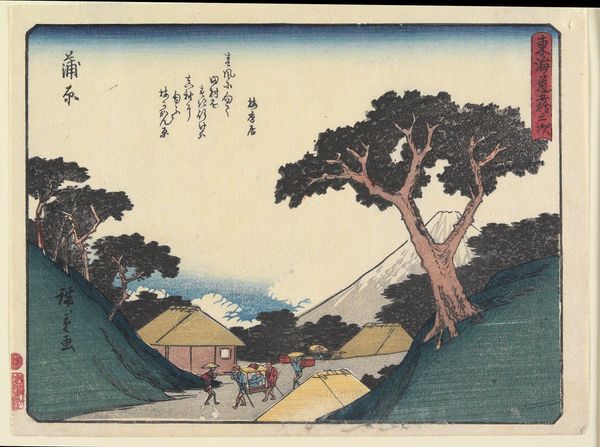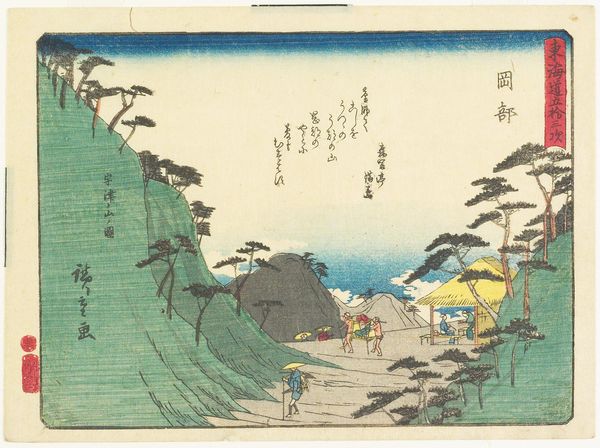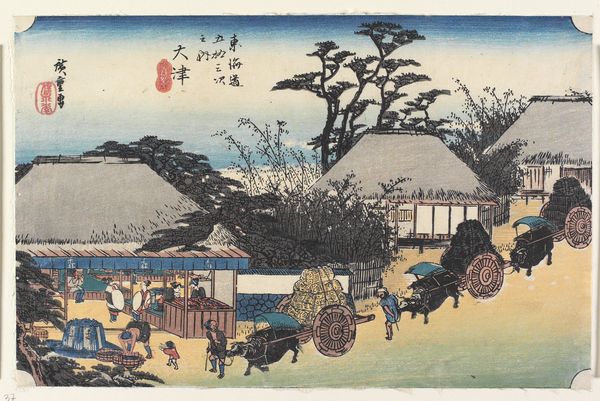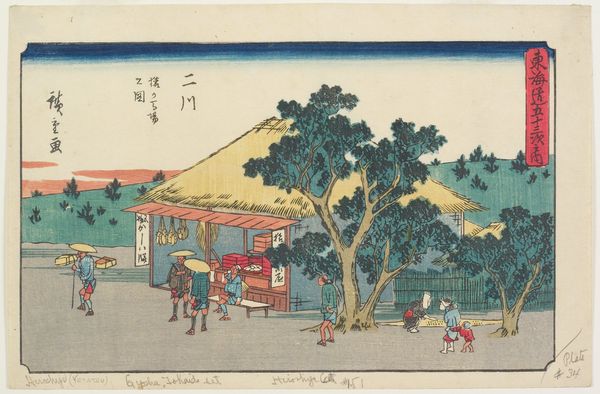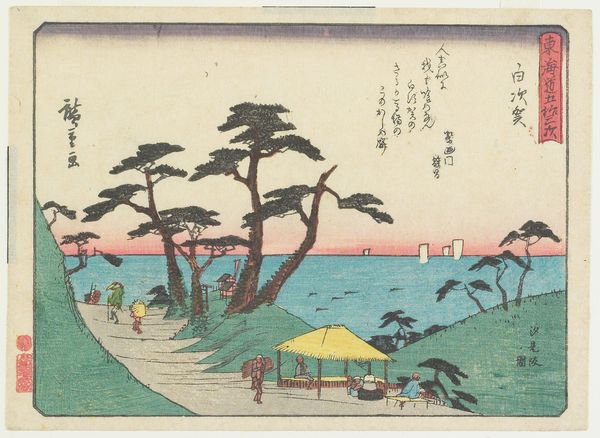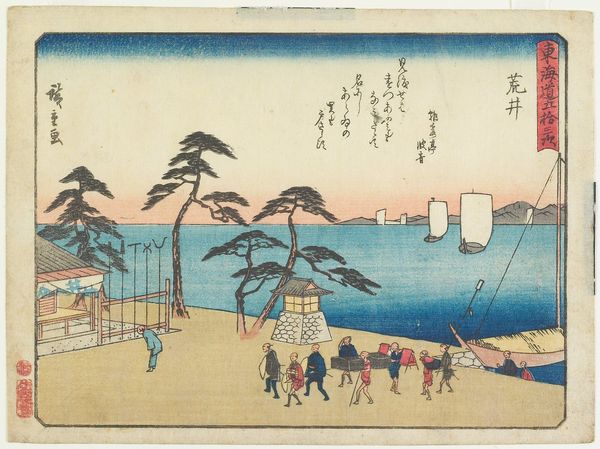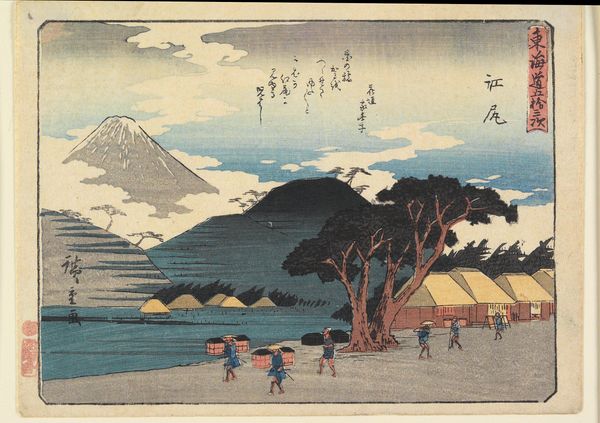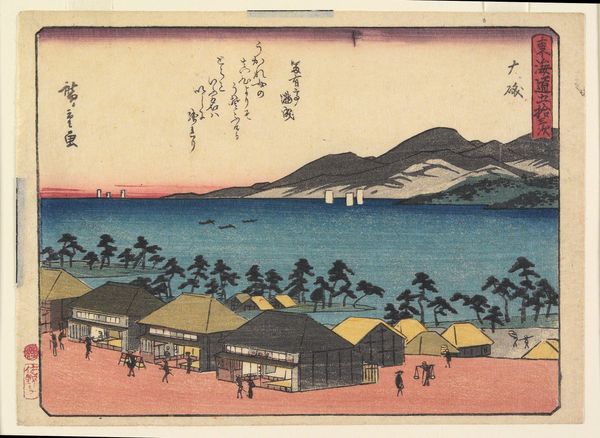
print, watercolor, ink, woodblock-print
#
water colours
#
ink painting
# print
#
landscape
#
ukiyo-e
#
japan
#
watercolor
#
ink
#
woodblock-print
#
orientalism
#
watercolor
Dimensions: 6 1/4 x 8 1/4 in. (15.8 x 21 cm) (image)6 9/16 x 9 in. (16.7 x 22.9 cm) (sheet)14 x 17 15/16 in. (35.5 x 45.5 cm) (mat)
Copyright: Public Domain
Curator: This is Utagawa Hiroshige's "Hodogaya," a woodblock print made sometime between 1840 and 1842. It’s part of his series depicting scenes along the Tōkaidō road, now housed here at the Minneapolis Institute of Art. Editor: My first impression is the charm. There is something inherently inviting about this bustling roadside scene with its cool palette. Curator: Indeed. Hiroshige was a master of capturing the everyday. Consider the composition—the receding perspective draws us right into the heart of Hodogaya, a post station along this vital route connecting Edo, modern day Tokyo, with Kyoto. This artwork captures a moment of transition with commercial activity. Editor: It makes me think about how art acts as a historical record. Each figure tells a story, revealing a segment of a vibrant world marked by social hierarchy. The palanquins, the burden carriers - the differences in attire highlight class divisions along the roadside, offering a lens through which to view labour practices of the time. Curator: Absolutely, and these prints had a profound influence. Ukiyo-e like this one significantly impacted Western art, most notably the Impressionists. Notice the striking use of color, the bold outlines - hallmarks of Japanese aesthetics that captivated artists like Van Gogh and Monet, shifting the trajectory of image making on a global scale. Editor: And it goes beyond the visual style, I think. It shows us an interconnectedness and shared struggles through travel. Then and now. Considering today's travel, are these not still roadside stories of global encounters, social class, and the transient lives of workers? Curator: I agree. While on the surface, it might seem like a quaint snapshot of 19th-century Japan, "Hodogaya" actually invites broader dialogues about society, cultural exchange, and how we understand each other across time and borders. Editor: This artwork invites us to consider what is still visible in the lines of history. How the transient roadside narratives endure. Curator: And through his careful compositions, Hiroshige ensured that "Hodogaya", much like its namesake post station, would continue to offer travelers – even those traversing time itself – a moment of respite and reflection.
Comments
No comments
Be the first to comment and join the conversation on the ultimate creative platform.
